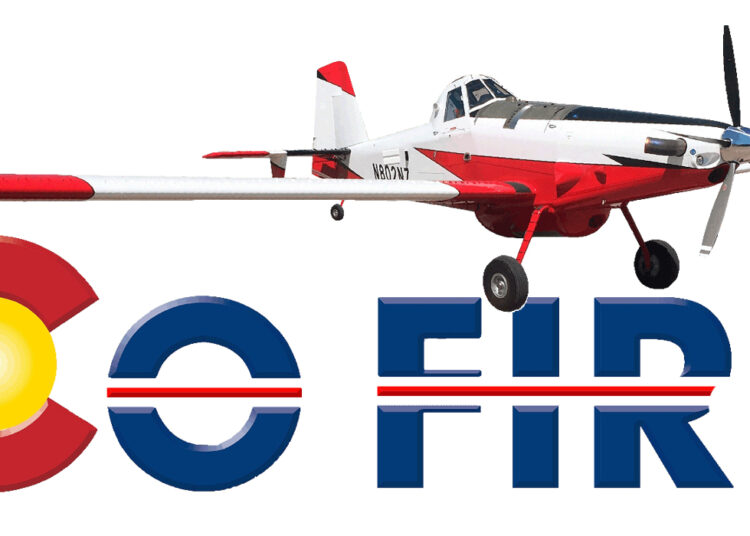Last week firefighting aircraft took to the skies just outside of Fort Morgan Colorado. The five pilots and two aircraft were participating in the annual aerial firefighting training hosted by CO Fire Aviation, just in time for the busy summer wildfire season.
The training was conducted by Mark Bickham, of Salvo, L.L.C., a consultant who is one of the nation’s top consultants in Fire Aviation Studies and Advisory Services. The annual training course covers fire behavior, safety, and methods of aerial suppression to control fires through both classroom work and practice flights in the aircraft over three days.
Aerial firefighting pilot’s have to demonstrate their abilities to maintain communications, identify the correct drop site, assess drop site conditions for any ground crews or obstacles, and then make then make a fire suppression drop before returning to base to reload.
Trainer Mark Bickham takes to the skies in a separate aircraft, where he can watch all of the training flights and drops with an eagle eye. Bickham picks out terrain where the imaginary fire is burning then radios the location and the type of drop that should be made to the firefighting pilot. The pilot must then identify the correct terrain and perform the requested drop before returning to the airport to reload. Each pilot is training in the Air Tractor 802 model commonly referred to as S.E.A.T. (Single Engine Air Tanker) aircraft in the firefighting world.
The day also included three demonstration drops of an enhanced water/fire suppression product called FireIce. FireIce is used as a short term fire retardant. The product is environmentally benign, is 10% of the weight of full retardants, and lays down a homogenous mixture for better penetration of vegetation canopies. For the demonstration each pilot was tasked with dropping a load of FireIce product in a straight line. Once the first line was laid the following pilots had to connect the line and then extend that line of FireIce to suppress a fire just like a real fire scene. The product is red so it was very easy for Trainer Bickham to see if the task was completed correctly.
Bickham evaluates each flight, radio communications, and drop accuracy before providing each pilot with a debriefing of feedback on their performance. All five of the pilots participating in the course did very well and will soon be off fighting real fires across the country.
CO Fire Aviation currently has a seventy-five day exclusive use contract in Oregon for one aircraft and call when needed contracts in Colorado, Nebraska, South Dakota, Idaho, Montana, Washington, and Alaska.
CO Fire Aviation owner’s Chris Doyle and Kyle Scott opened the hangar doors on the firefighting business during the fall of 2014. Mr. Scott also owns and operates an aerial application company out of the Fort Morgan Airport. Co-owner Chris Doyle has extensive experience in aerial application work and aerial firefighting from around the world. The Air Tractor aircraft are made in Texas and used around the world for aerial application (also referred to as crop dusting) and firefighting work.
For more information about aerial application operations, call the Colorado Agricultural Aviation Association at (970) 217-5293, or email us at coagav@gmail.com.
Earl Watters: The Firefighter Behind The Chinook Helicopter Boomer
Firefighter Pilot Shares Videos of Minnesota Wildfire Water Drops Wildfires continue to rage in Northern Minnesota, on pace to be the...






